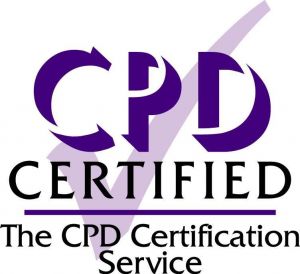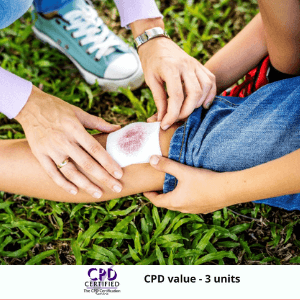Paediatric First Aid Training
The aim of this course is to equip you with the theoretical knowledge, skills and confidence to deal with paediatric first aid situations you encounter. First aid covers a multitude of skill sets and responses to many medical situations. The primary aim of first aid is to provide immediate medical care and treatment that will either resolve the situation (in less serious ‘everyday’ cases) or provide an essential short-term emergency treatment until professional medical assistance is in place.
The objectives of first aid are,
- To preserve life.
- To prevent further injury or the deterioration of an existing condition.
- To promote recovery.
- To make sure no further harm results from that particular situation
Who is this course for?
Paediatric first aid covers a wide range of situations so professionals from a variety of backgrounds and vocations will benefit. In general, this means people who are responsible for paediatric welfare and child care. This includes:
- Childminders
- Nursery staff
- Teachers
- Nannies
- Sports Coaches
- Club leaders
Please be aware that, while this course covers the theoretical skills and knowledge, using video First Aid methods to illustrate treatment, to be considered fully competent in paediatric first aid, practical hands-on training is required. This course is designed to be part of a blended learning that equips the learner with sufficient knowledge to take to the practical demonstration and so, gain the award in Paediatric First Aid.
This is a cost effective and time saving way of gaining the necessary theoretical knowledge prior to being assessed through practical demonstration. This practical element is a requirement to gain First Aid certification.
Some areas covered include:
Resuscitation Guidelines and Basic Life support: A key area of emergency paediatric first aid. It’s typically used for children and infants when they have an injury or a sudden illness. The need to use resuscitation indicates that there’s a potentially serious situation before you.
- The course takes the learner through how to place a child in the recovery position. The recovery position help to keep the airway open and will ensure any fluid or vomit won’t cause the patient to choke.
- The course will demonstrate how to perform CPR. CPR, which stands for cardio pulmonary resuscitation, is a set of techniques used to get blood circulating by pumping the heart. This delivers oxygen to the brain and stimulates the heart to function again.
Fractures and Head Injuries. The course examines skull and spinals injuries, including injuries of concussion and compression. Damage to the spinal cord, which controls the body’s central nerous system, if very serious. Handling a casualty incorrectly can cause permanent changes in body functions, so it is imperative for anyone faced with this situation to know how to treat the patient while they wait for the emergency services to arrive.
Electric Shocks: The course looks at the symptoms of electric shock and how to provide emergency first aid. We also discuss combining basic life support and CPR, with other measures, where the child loses consciousness.
Existing Medical Conditions: Here the course takes the first aider through the most common childhood conditions where competent First Aiders should be able to treat the child with emergency treatment until professional medical help arrives. These common conditions include asthma, diabetes and seizures. You will also learn to recognise the signs and symptoms of meningitis.
Minor Injuries, where your first aid skills will provide valuable solutions to treatments for bruising, cuts and grazes, splinters, nosebleeds and bites and stings
Planning and Documentation
The course provides the material you need to devise your own detailed risk templates that cover the requirements for your role as a key individual with first aid responsibilities. It’s important that you’re prepared for a wide range of what might be described as more serious accidents, injuries or medical conditions that could affect the children you’re caring for.
The documents you create should be easy to understand, and the various responses needed should be easy to implement. You need a clear plan of action to respond effectively to a range of possible emergencies as well as documents which makes standard medical information about each child readily accessible.
| Course Content | Module |
| Introduction to Paediatric First Aid | 1 |
| Planning and Preparation | 2 |
| Essential First Aid Knowledge | 3 |
| Basic Life Support | 4 |
| Fractures and Head Injuries | 5 |
| Shock, Bleeding and Dressing Wounds | 6 |
| Specific Medical Conditions | 7 |
| Minor Injuries | 8 |
| First Aid Documentation and First Aid Kits | 9 |
Paediatric First Aid Training

CPD Units ‘3’
Online assessment is carried out by a series of multiple choice questions. Candidates require 70% correct answers to secure a pass. PDF certificate will be sent directly to your inbox. Hard copy certificate on requrest. Duration: 115 minutes (Note: This is based on the amount of video content shown and is rounded off. It does not account in any way for loading time or thinking time on the questions).


